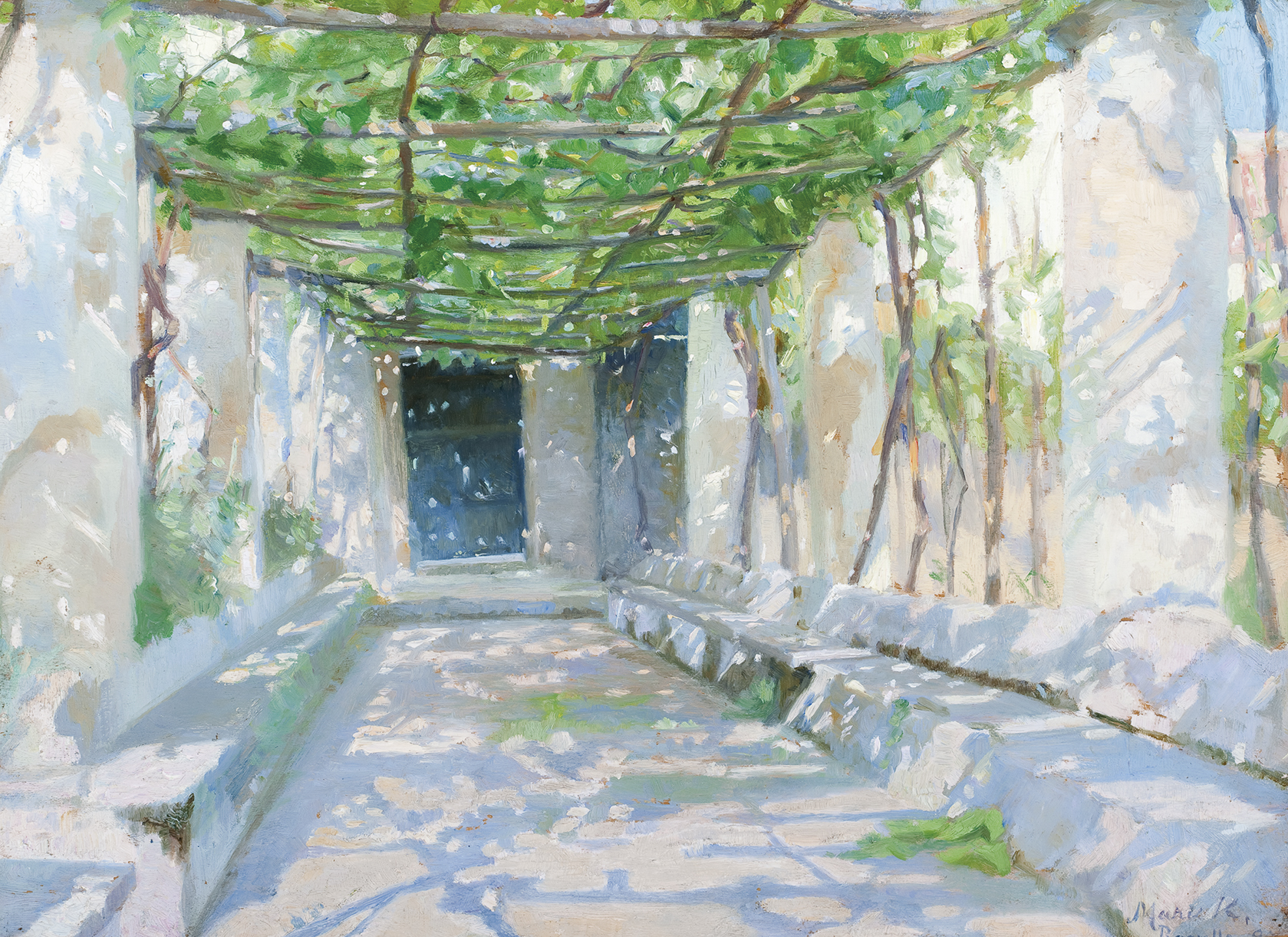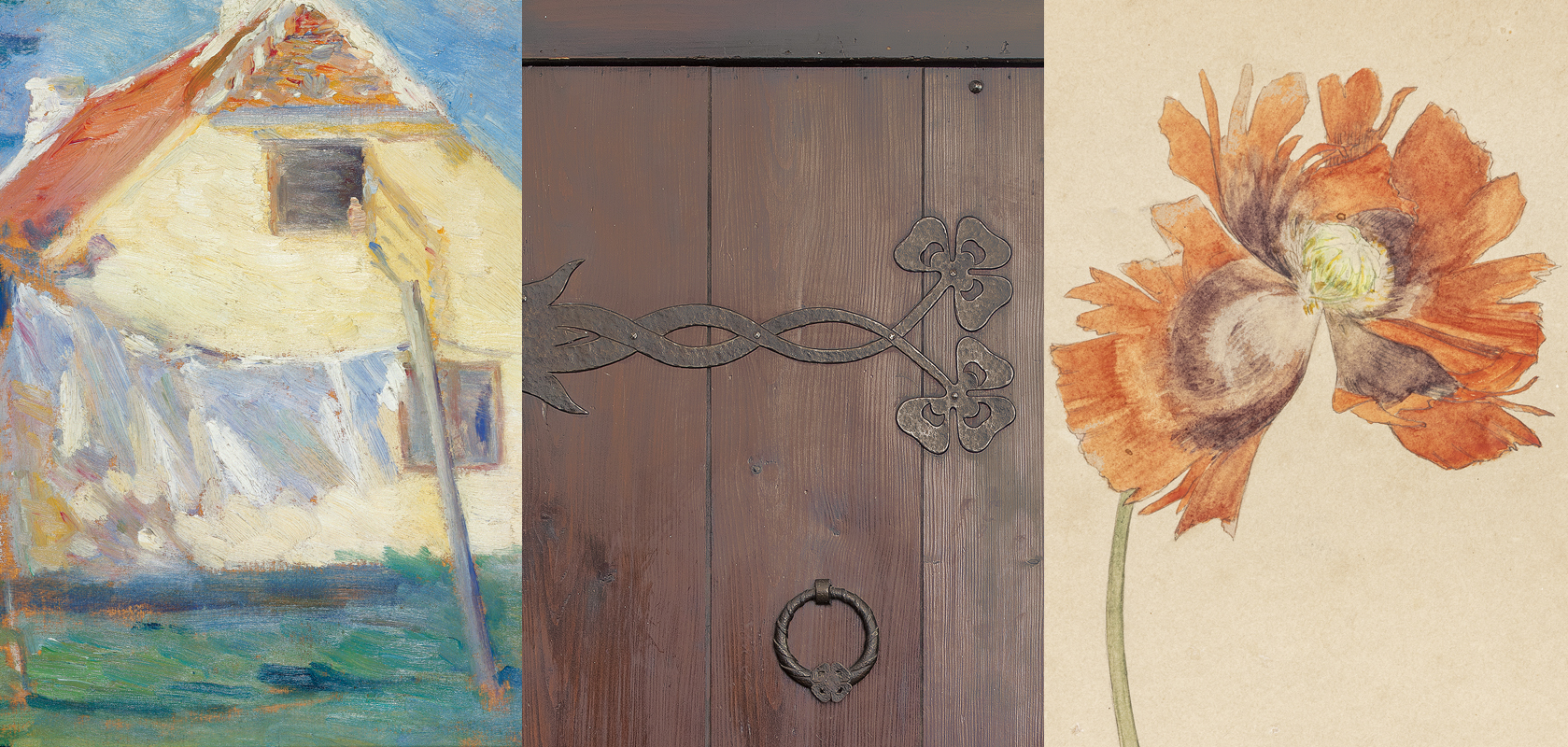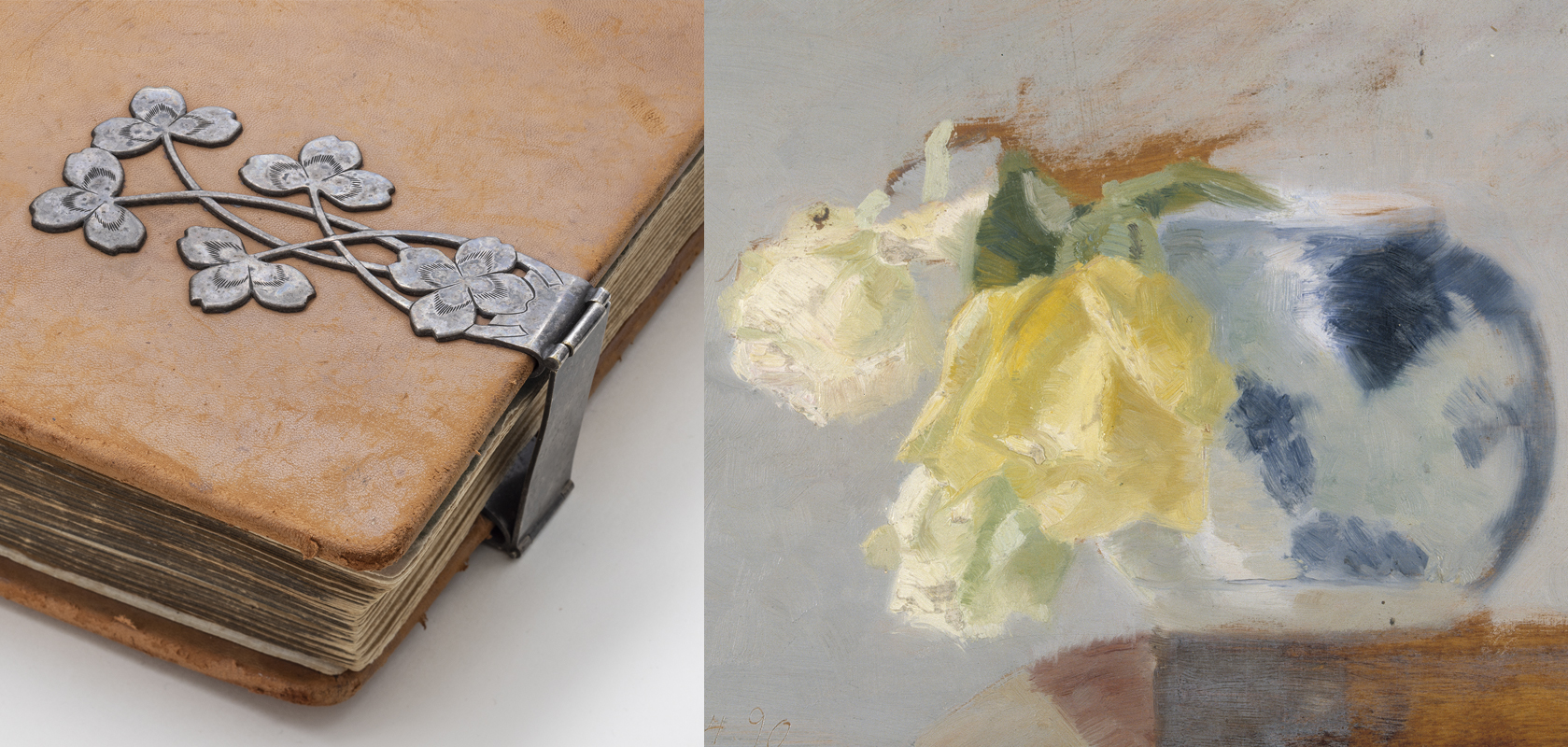In 2023, the Art Museums of Skagen focuses attention on the artist Marie Triepcke Krøyer Alfvén (1867–1940) with a major exhibition showcasing her art, designs and interior design.
The exhibition sheds light on new aspects of Marie Triepcke Krøyer Alfvén, the circles and networks she moved among and the sources from which she drew inspiration. In doing so, the exhibition also aims to showcase new narratives about Danish late nineteenth-century art and to place the artist’s work in an international context.

Marie Triepcke Krøyer Alfvén’s endeavours evolved in a process of ongoing interplay with a dynamic and fruitful art scene that flourished around the turn of the century, and her designs and talent for interior design caught the eye of many of the period’s leading arbiters of taste, setting new trends. She belonged to the artistic vanguard of the time, and her own artistic practice cuts across many different art forms and spans painting, crafts, design and interior design.

At the end of the nineteenth century, she became especially inspired by the English Arts & Crafts movement and the Aesthetic movement, and she is one of the few Danish artists in whom a palpable influence from these movements is evident in her furniture design and interiors. She later moved Sweden, where she married the Swedish composer Hugo Alfvén. In 1909–11 she created her last magnum opus: the interior design of her and Alfvén’s home, Alfvénsgården, in Tällberg, decorating it in the Nordic folk style.
Up until now, the dominant narrative about Marie Triepcke Krøyer Alfvén has been the story of the talented artist who, in 1889, married one of Denmark’s most successful and internationally recognised artists, Peder Severin Krøyer. As a result of her marriage to the famous Krøyer, she stopped painting and exhibiting in the 1890s, seemingly devoting herself fully to the role of an artist’s wife and mother of the couple’s child, their daughter Vibeke Krøyer. But even though she no longer exhibited after 1891, she remained an active artist and made her artistic imprint in many contexts – including the Krøyers’ homes in Skagen and Copenhagen as well as several other homes and houses in Skagen.

The exhibition is created in collaboration with the Hirschsprung Collection.